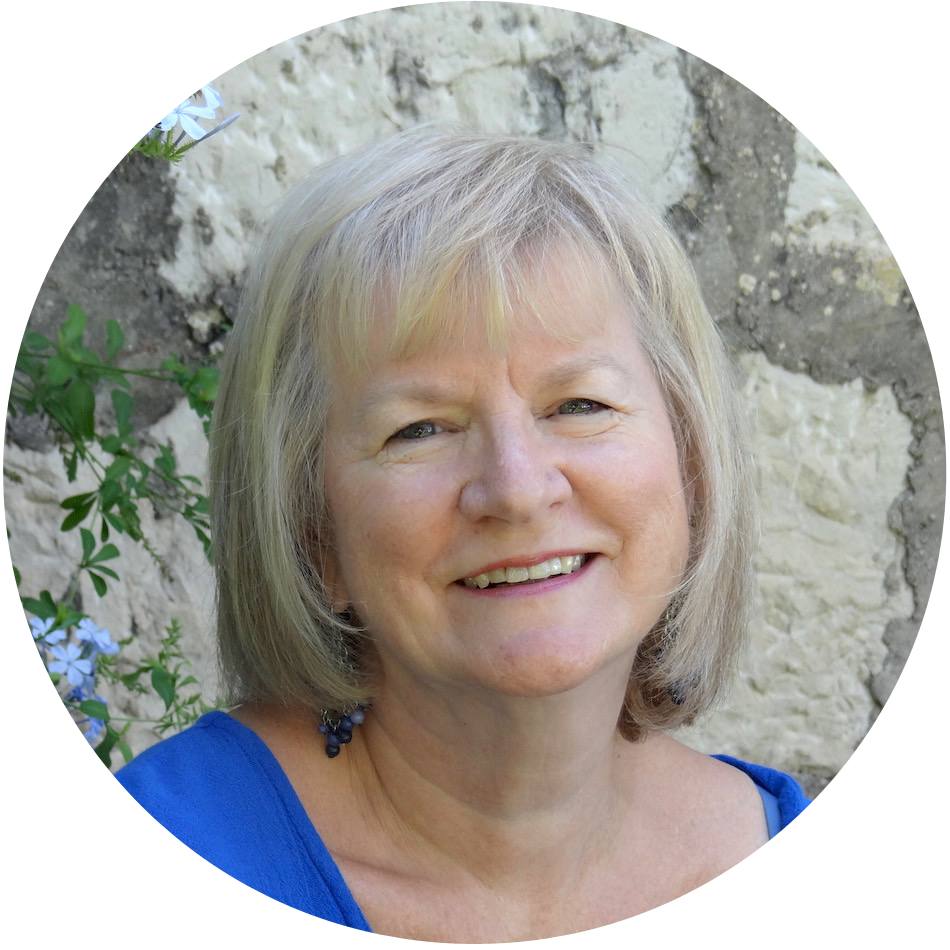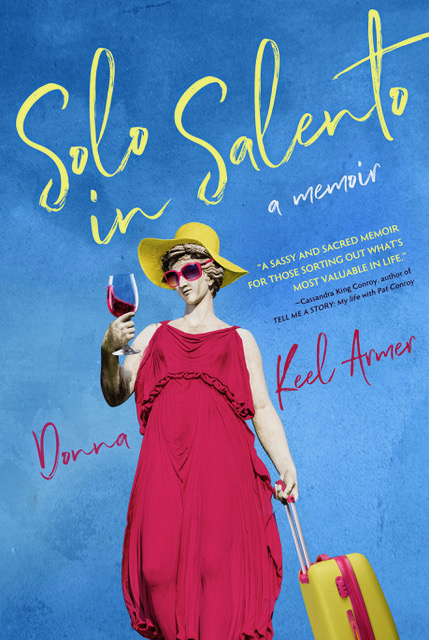Monday (lunedi) – October 8, 2012
OTRANTO, ITALIA
To awaken alone in a strange town is one of the most pleasant sensations in the world………Freya Stark
I fall asleep on the sofa. It’s in a corner of the kitchen along with a TV. It’s a homey environment—the place where I will spend most of my time when I’m not on one of the terraces or rambling the narrow pathways of my “now” home in Otranto.
La cucina (the kitchen) speaks so strongly to me of home, family and being in community. It’s my favorite room in the house wherever I am in the world.
I wake up after midnight and make my way to bed. It’s still early when dawn creeps into my flung-open window I leap out of bed and rush to the terrace to watch the sun rise on this new, new day for me. My first day alone.
The director of Scuola Porta d’Oriente had requested that I arrive at 10:20 to register. Anxiety creeps around my neck. It’s been a long time since I’ve done something so totally out of my comfort zone. What in the world made me decide that a week’s worth of classes in mosaic design would be beneficial?
Before I left my South Carolina home, I told everyone I had signed up for the class to get a sense of the talent and intensity required to design and craft the beautiful mosaic floor in Otranto’s cathedral. But now I just wonder if I’ve lost my mind.
But then I think of my time with Paolo and the gift he gave me yesterday when he showed me the mosaic floor and told me to visit it often. He would be disappointed if I didn’t take the class and I’m not one to disappoint people. So I’ll at least show up for the first class.
I skip my morning cappuccino because I’m jittery enough without a jolt of caffeine to jump start this morning. Since I have plenty of time, I set up the computer by the window. From time to time I glance up and watch the clouds billow in from the sea. The October weather is spectacular—sunshiny warm, gentle breezes, azure skies, birds dipping in and out of the sea.
At 10:15 I leave for school. The adrenalin pushes me down the street so fast that I trip over my feet. I tell myself to slow down and breathe, but my thoughts are wild. How can I possibly be here in this strange place, going to a school I know nothing about, to take on an artistic endeavor that I don’t have the slightest experience with—questions pounding my brain. I keep walking.
There’s no sign to indicate the school in the post WWII cinderblock building. But the front gate and the front door are open. I ease through the door and climb the stairs. Melodious voices drift from a corner office. Everyone pivots their attention to the door when I peek in.
A very beautiful Italian woman looks up and says, “ciao, Donna.” Her voice is soft, lyrical. On her lips my name sounds magical.
My instructor introduces herself as Francesca. She’s young and artsy with lots of piercings and bright colored hair. But a lovely smile lingers in her eyes. She speaks zero English so this will be an interesting experience since my knowledge of Italian is limited and the subject matter is complex.
In the classroom Francesca introduces me to a young Australian woman who is taking a private class in oil painting. My eyes wonder over the beauty of I her work while she chats to me. She tells me that her class is only for one day. I ask if she speaks Italian. She responds no. I ask if the language is a problem for her. She says yes.
Karen also tells me that Barbara (the director) comes into the classroom often to “sort of” interpret the instructions for Karen. But, Barbara’s English is hesitant, and she, like me, has to run two languages through her head before she forms the words. I can see both languages zipping though her brain waves simultaneously. Karen isn’t exactly happy with this lack of communication and says she’s glad she’d only paid for one day of instruction. That’s all the conversation we have time for because Francesca says we must get started on our project.
Francesca had already figured me out as a person that’s doesn’t know what they’re doing. My first assignment is to select a design. She demonstrates by showing me a simple little design for a coaster or perhaps a trivet. Of course, I’m prepared. I whip out three different designs:
1) The coat of arms of Otranto – a complex lighthouse with a serpent wrapped around it (what was I thinking) along with a crown over the top and 2 kinds of branches around the bottom with “ ivitas, fidelissima, hydrunti” flowing across banners around the sides and base;
2) A series of Primitive and Christian Symbols from the ancient ages; and
3) Masses of red starfish.
Francesca’s face drops into retreat mode. The look in her eyes clearly says, “you must be a crazy American”. Everything I thought would be a great idea is NOT! Francesca kindly tells me (or this was what I thought she said) that what I had selected was too complicated…molto difficile. I must start at a very simple level.
For a moment, I’m lost but then I remember the beautiful primitive Salento sun design on the gates to the entrance of the school. Barbara has been observing the interaction between us. I turn to her and ask if I could use this symbol. She and Francesca chat rapidly until Francesca finally nods and says “va bene”.
She hands me a board, a pencil and drawing paper and beckons me to follow her down the stairs and out to the gate. She points at the gate and to the drawing board. My heart did little flip flops. I cannot draw. Seriously, I can’t make stick people look like stick people. I explain to Francesca in a smattering of Italian that I’m a writer and a photographer, but I have no ability to draw. She looks at me strangely, but takes the board from my hands and starts to sketch……and I take a photograph of the design.
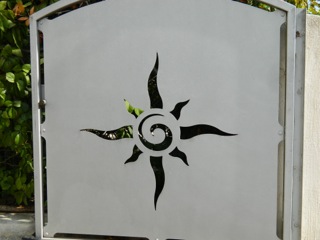
The gate at the Scuola Porta d’Oriente
Back upstairs she hands me the board, telling me to finish the drawing exactly as I want it to look. I surprise myself by completing this task with an end result that looks reasonably like the gate design.
Francesca nods for me to sit. She takes a sheet of paper and sketches part of my design on it. Then she pencils in little squares representing the mosaics. She points to my board and design and says to draw the same little geometric shapes onto my sun.
It’s a laborious task with much erasing and much guidance by Francesca. If nothing else, I’m persistent and after 2+ hours, Francesca says, “bene”. My hand trembles from the tightness of my grip on the pencil; my neck and shoulders are permanently slouched……but I’m through step 1. (NOTE: For all of my gifted artist friends reading this, you have my deepest admiration.)
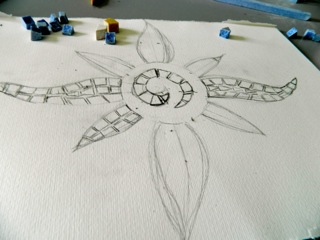
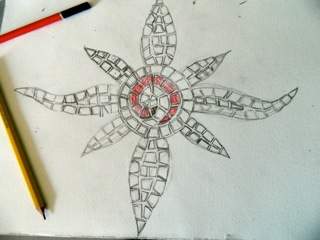
Next, I choose colors for my sun. How easy is that? Of course, giallo (yellow) e rosso (red). But no, there is no yellow or red marble pieces available. OK, what are my choices? Blu, bianco, verde, rosseto, grigio, nero—hmmmmmmmm. Not good choices but I choose blu e bianco and often (here in the Salento region of Puglia) the sun is portrayed as blue.
Next it’s time to cut the marble. I’m handed one large glove and large clippers that appear to be from the stone age. Looking at the primitive tools, I imagine how difficult this project is going to be. Perhaps my end results will be less than what I anticipated. If I’d known in advance how difficult the process would be, I’d a chosen that little trivet instead of sun rays that have to be cut with precision.
Instead of dwelling on this aspect, I create in my mind a picture of the early monks and craftsmen who toiled many hours, days, weeks, months and years to accomplish the perfection I saw in the floor in the cathedral.
Francesca first demonstrates how to use the cutter then hands it to me. I grasp it with all my might but nothing happened. Francesca encourages me to try harder. I grasp and press until my eyes bulge. My first stone ricochets across the room, hitting the wall, bouncing onto and off the table, rolling into some far off corner of the room. Luckily it didn’t puncture anyone’s eye. Francesca smiled, I giggled, and we both relaxed.
She nods at a stack of marble sticks and makes a motion to cut, cut, cut. Marble is really HARD. It does not cut easily. My hands throb and heat rises molting my face into red splotches. After many stones are scattered on the table and when my hands can’t possibly cut another one, Francesca tells me to watch her. She shows me how each of the cut pieces must now be cut into various shapes to fit the design. Another seemingly impossible task.
Class time is over and I’m ready to bolt, but Francesca says I must stay to complete at least one ray of sun. She says this when she sees the despair on face. Maybe she thinks if I complete at least one small piece I’ll be inspired enough to return. She’s right. Once I see the beginning of the Salento sun come to life, I understand. Tomorrow I will return.
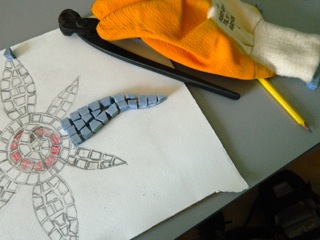
Francesca indicates it’s okay to leave everything on the table. Today she will clean up. Tomorrow I will stay to help. There’s no mirror but the gritty marble dust on my face and hair and scattered over my jeans and shirt are enough for me to realize I’m a mess. I shake off as best I can and walk back to the old city cradling my crippled hand.
Once inside the walled village, I ramble through tiny streets until I find the Blu Bar. It’s the little cafe Paolo introduced us to on our first day in Otranto. Seated at an outside table, I bravely order the aperitivo e Spritz.
The waitress smiles in recognition. The sun is soft blue (can you tell I’m already thinking the sun is blue—I meant to say sky). The breeze flows around the nearby ancient ruins with purpose. Perhaps the weather is changing. I pretend I’m local. I stretch into the breeze, watching and listening and jotting notes in the It’s such pleasure to sit, watch and listen—and then to write in my bright red notebook. Both my writing and photography have been on hold since I arrived in Otranto. It was more important to spend those few days with Ray. Today I begin—my pen touches the crisp white first page.
The Spritz arrives in a very large glass. Sweet bursts of fresh oranges mingle with the fizzy prosecco and the bitter Campari. My shoulders and neck ease up a bit, but not my hand. It throbs as angry red streaks pulsate and swell.
The plate of tiny appetizers arrives—bite size prosciutto e barrata; miniature taralli cut in half with cherry tomatoes and arugula; a hot sandwich of ham and tomato; a tiny meatball; bruschetta with roasted peppers and eggplant; shrimp in a delicate sauce on soft bread; slices of focaccia with spicy tomato sauce and slices with rosemary and garlic; a ball of fresh mozzarella; and my favorite—local greens cooked with garlic on crusty brown bread.
This feast is a prescription for happiness. Threads of joy lap at the edges of my soul. I am where I need to be.
For me the journey is over. Living begins.
a domani
Donna
When we get out of the glass bottle of our ego and when we escape like the squirrels in the cage of our personality and get into the forest again, we shall shiver with cold and fright. But things will happen to us so that we don’t know ourselves. Cool, undying life will rush in…..D. H. Lawrence

